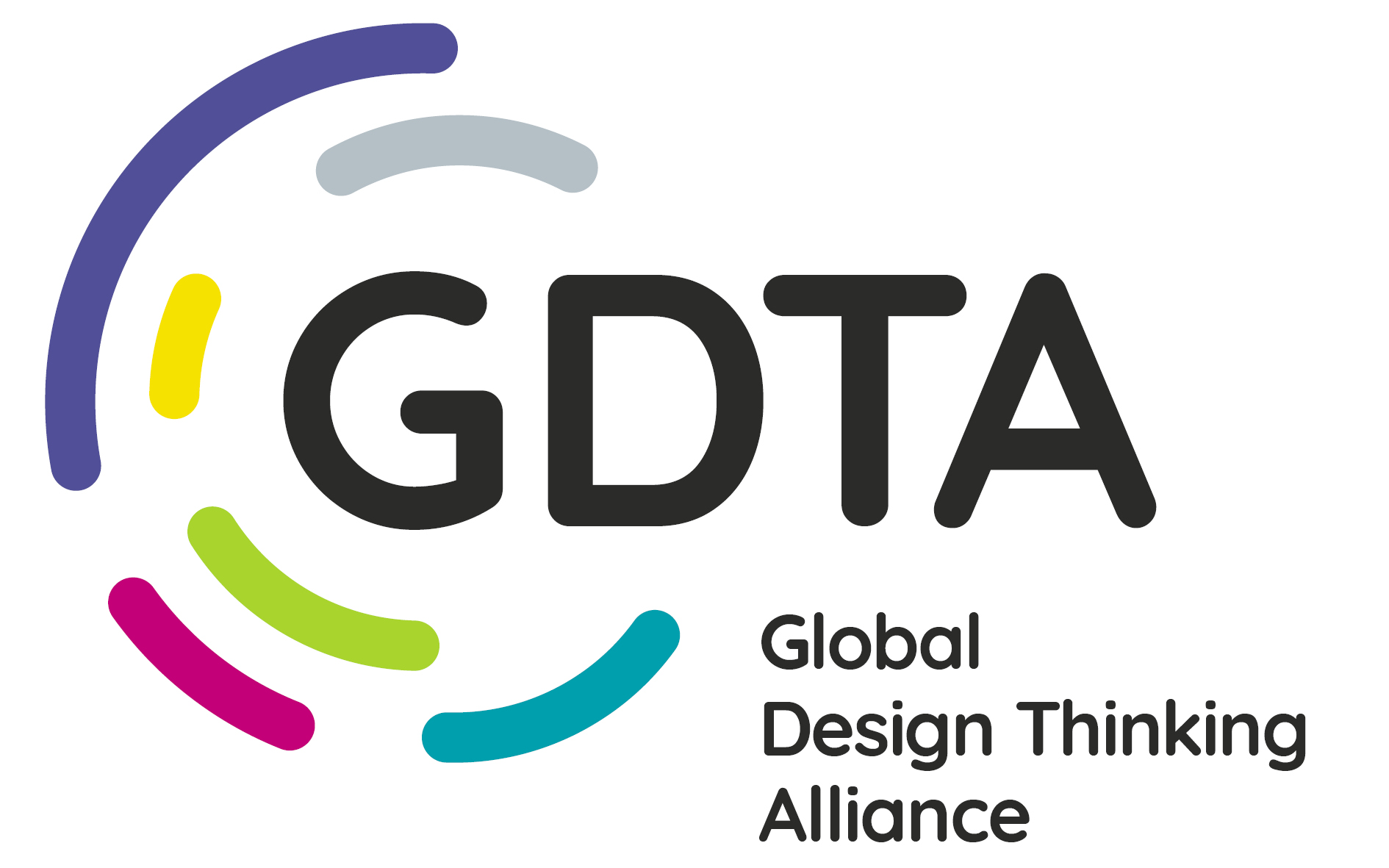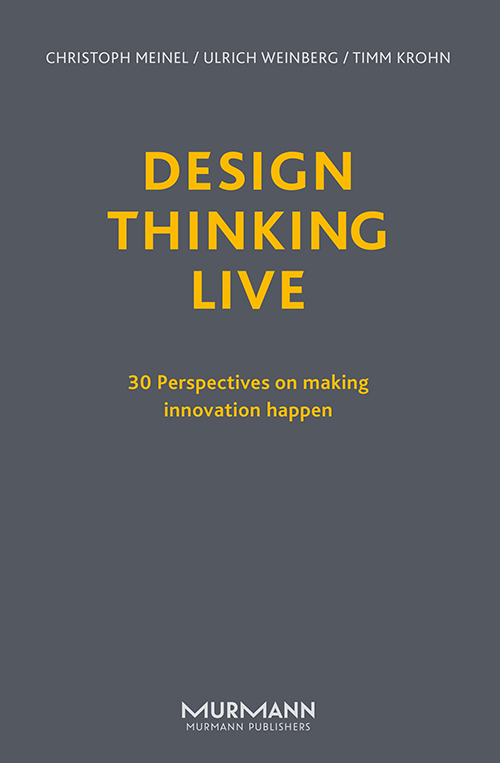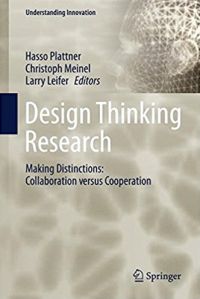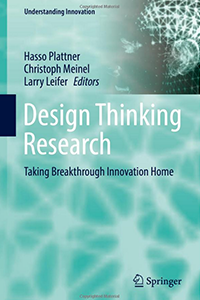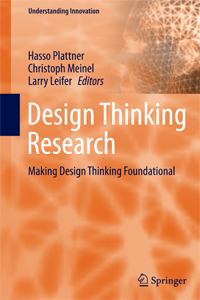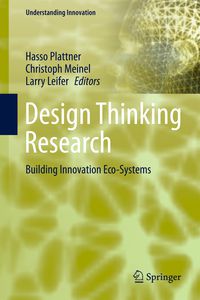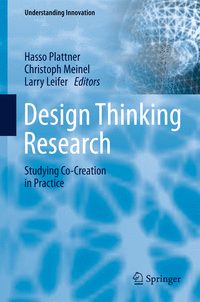Publications
Here you can find an overview of publications around the topic of Design Thinking by the GDTA and its member institutions.

The Experimentation Field Book: A Step-by-Step Project Guide
by Published Feb 13th 2024
Experimentation is crucial for innovation, bridging the gap between generating ideas and implementing them. This book offers practical guidance for conducting effective experiments in various contexts. It covers everything from idea generation to prototyping and testing, providing a step-by-step framework with user-friendly instructions and customizable templates. Drawing on design thinking and practical business approaches, it is an essential toolkit for problem solvers and innovators across disciplines, from academia to industry.

AI in education: Balancing Innovation with Ethics
Published on the Higher Education Digest Website on January 16, 2024, Dr. Mario Herane, Vice President of Global Affairs and Development at Universidad Mayor
The article explores the transformative impact of Artificial Intelligence (AI) in higher education. The article underscores the exciting opportunities and ethical challenges associated with AI, drawing parallels to past technological revolutions. Emphasizing the need for proactive engagement, the piece highlights key ethical considerations, including data protection, transparency, and equitable access. It stresses the importance of professional development for educators and careful assessment of AI implications to ensure responsible innovation in higher education. Ultimately, the article envisions AI evolving into a valuable asset for enhancing the learning experience and preparing students for future careers.
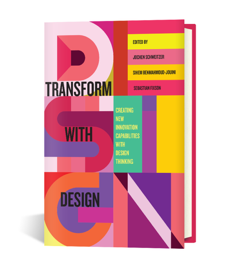
Transform with Design: Creating New Innovation Capabilities with Design Thinking
Edited by Jochen Schweitzer, Sihem BenMahmoud-Jouini and Sebastian Fixson.
Transform with Design presents examples of creative organizations across industries and geographies, and recounts the stories of how they adapted design thinking to build their innovation capabilities. Written by leading industry experts and design-thinking scholars, the book features ten anecdotal experiences by professionals who detail the implementation of design thinking as it unfolded for them. Contributors share how they navigated the many barriers and obstacles they encountered along the way and describe their experience from early beginnings to the present, revealing valuable lessons for anyone who finds themselves in a similar situation.
Providing a rich tapestry of examples, anecdotes, and lessons that place design thinking in perspective, Transform with Design is for innovators interested in learning how design has transformed organizations while also gaining a current perspective on what others are doing in their field.
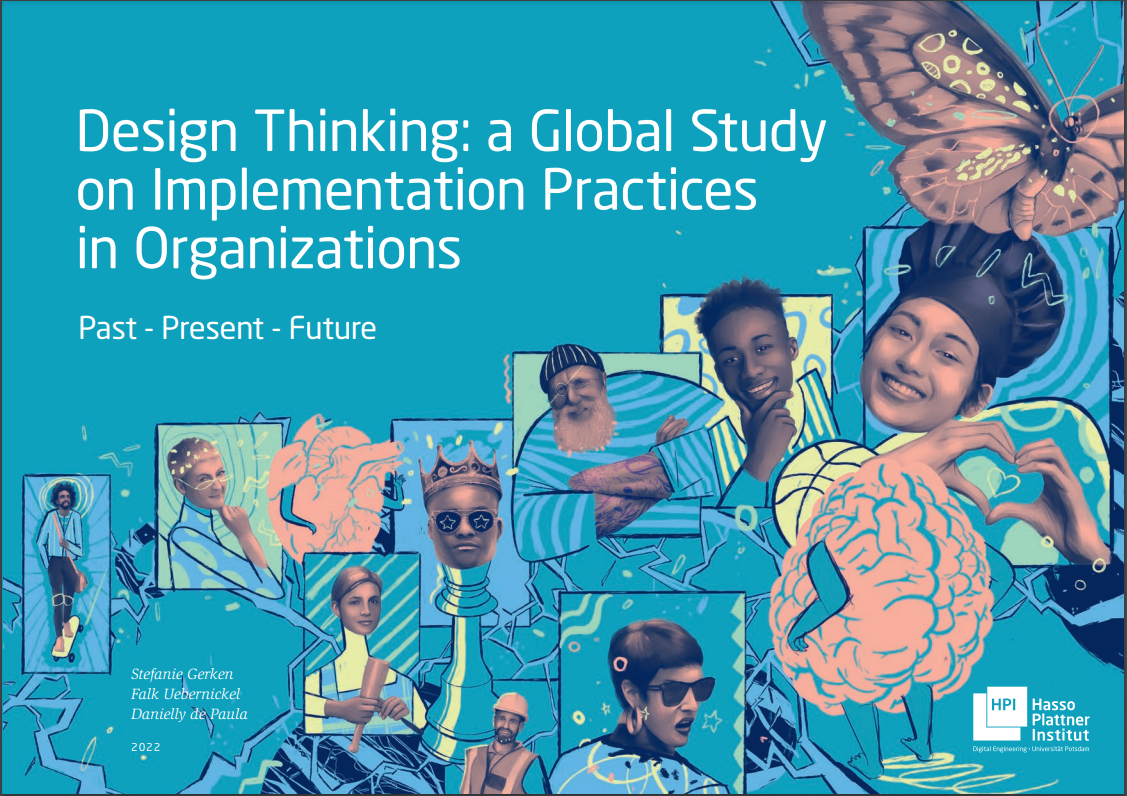
Design Thinking in Practice – a global study
The study “Design Thinking in Practice” examines the implementation practice of Design Thinking in organizations. It follows on from a 2015 study by the Hasso-Plattner-Institute and the Stanford Design Thinking Research Program, which aimed to better understand what organizations actually do when they claim to practice Design Thinking. This study sought to analyze the evolution over the past six years and outline the scope of the study. To do this, it examined various implementation aspects, such as strategy, process, tools & mindset, and impact & measurement. Using these organizations that claim to implement Design Thinking, cross comparisons were made to identify both significant differences and simplifications in the way Design Thinking is interpreted and applied in organizations.

Design Thinking in Education – Christoph Meinel, Timm Krohn
This book summarizes experiences, approaches, and reflections on design thinking in education from different perspectives. As education faces new challenges in the twenty-first century, design thinking can help address complicated problems and guide change. This book explores these approaches through real-world examples and offers insights into requirements and protocols that design thinking practitioners can apply to transform their academic or professional ecosystem.

Innovation via Design Thinking – Keyue Wang, Linlin Shui, Hao Jiang
Written by professors from Communication University of China, it is the first book in China to introduce the Design Thinking mindset and 6-step process comprehensively with rich global and local cases. From 2011, the writers have planned and led more than 30 innovation projects and jointly coached over 100 workshops for customers in various industries. The book also discusses visions for the innovative future of China.
Design Thinking Live – Christoph Meinel, Ulrich Weinberg, Timm Krohn (Eds.)
What do a retired stanford professor, a wheelchair-bound social entrepreneur, a Malaysian government official and a German TV host have in common? They all have encountered a new approach to thinking in recent years, and they all are thrilled by Design Thinking.
Network Thinking – Ulrich Weinberg
You are looking for a metaphor describing the paradigm shift from analog to digital world? Take a look at your bookshelf! The author uses nthe centuries-old encyclopedia, the famous German „Brockhaus“, as a thinking model of the analog 20th century and, on the other hand, uses the network as the thinking model for the digital 21st century. Learn how board members of global corporations are reshaping their organization, teachers are rebuilding their education and how Network Thinking can also be personally useful to you.
Design Thinking Research – Making Distinctions: Collaboration versus Cooperation – Hasso Plattner, Christoph Meinel, Larry Leifer (Eds.)
This book summarizes the results of Design Thinking Research Program at Stanford University and the Hasso Plattner Institute. Offering readers a closer look at design thinking, its innovation processes and methods, it covers topics ranging from how to design ideas, methods and technologies, to creativity experiments and creative collaboration in the real world, and the interplay between designers and engineers. The authors show how these methods and strategies actually work in companies, and introduce new technologies and their functions. Furthermore, readers learn how special-purpose design thinking can be used to solve thorny problems in complex fields. Accordingly, design thinking is not merely the result of special courses nor of being gifted or trained: it’s a way of dealing with our environment and improving techniques, technologies and life.
Design Thinking Research: Taking Breakthrough Innovation Home – Hasso Plattner, Christoph Meinel, Larry Leifer (Eds.)
Offering readers a closer look at Design Thinking, its innovation processes and methods, this book covers topics ranging from how to design ideas, methods and technologies, to creativity experiments and wicked problem solutions, to creative collaboration in the real world, and the interplay of designers and engineers. The authors show how these methods and strategies actually work in companies, introduce new technologies and their functions, and demonstrate how Design Thinking can influence such unexpected topics as marriage.
Design Thinking Research: Making Design Thinking Foundational – Hasso Plattner, Christoph Meinel, Larry Leifer (Eds.)
The authors offer readers a closer look at Design Thinking with its processes of innovations and methods. The contents of the articles range from how to design ideas, methods and technologies via creativity experiments and wicked problem solutions, to creative collaboration in the real world and the connectivity of designers and engineers. Furthermore, we see how special design thinking use functions in solving wicked problems in complex fields. Thinking and creating innovations are basically and inherently human – so is Design Thinking. Due to this, Design Thinking is not only a factual matter or a result of special courses nor of being gifted or trained: it’s a way of dealing with our environment and improving techniques, technologies and life.
Design Thinking Research: Building Innovators – Hasso Plattner, Christoph Meinel, Larry Leifer (Eds.)
Design thinking as a user-centric innovation method has become more and more widespread during the past years. An increasing number of people and institutions have experienced its innovative power. At the same time the demand has grown for a deep, evidence-based understanding of the way design thinking functions. This challenge is addressed by the Design Thinking Research Program between Stanford University and Hasso Plattner Institute. Summarizing the outcomes of the 5th program year, this book imparts the scientific insights gained by the researchers through their investigations, experiments, and studies. With this book, we aim to understand the innovation process of design thinking and the people behind it. The contributions ultimately center on the issue of building innovators. The focus of the investigation is on what people are doing and thinking when engaged in creative design innovation and how their innovation work can be supported.
Design Thinking Research: Building Innovation Eco-Systems – Hasso Plattner, Christoph Meinel, Larry Leifer (Eds.)
This book summarizes the results of Design Thinking Research carried out at Stanford University and Hasso Plattner Institute. The authors offer readers a closer look at Design Thinking with its processes of innovations and methods. The contents of the articles range from how to design ideas, methods, and technologies via creativity experiments and wicked problem solutions, to creative collaboration in the real world and the connectivity of designers and engineers. Thinking and creating innovations are basically and inherently human – so is Design Thinking. Due to this, Design Thinking is not only a factual matter or a result of special courses nor of being gifted or trained: it’s a way of dealing with our environment and improving techniques, technologies and life.
Design Thinking Research: Studying Co-Creation in Practice – Hasso Plattner, Christoph Meinel, Larry Leifer (Eds.)
This book summarizes the results of the second year in the Design Thinking Research Program, a joint venture of Stanford University and Hasso Plattner Institute in Potsdam. The authors have taken a closer look at the issue of co-creation from different points-of-view. The concept of co-creation can also be applied to the phase in which new ideas and related thought start to influence companies, the economy, our culture, and society. The perpetual pursuit for inventions, new creations and innovations is inherent in human nature. The concept behind co-creation may sound simple, however, it is both an essential element of Design Thinking and highly complex. It is about creating positive synergies for all parties involved.
Design Thinking Research: Measuring Performance in Context – Hasso Plattner, Christoph Meinel, Larry Leifer (Eds.)
This book summarizes the results of the third year in the Design Thinking Research Program, a joint venture of Stanford University and the Hasso Plattner Institute. Understanding the evolution of innovation, and how to measure the performance of the design thinking teams behind innovations, is the central motivation behind the research work presented in this book. Addressing these fundamental concerns, all of the contributions in this volume report on different approaches and research efforts aimed at obtaining deeper insights into and a better understanding of how design thinking transpires. In highly creative ways, different experiments were conceived and undertaken with this goal in mind, and the results achieved were analyzed and discussed to shed new light on the focus areas.
Design Thinking: Understand – Improve – Apply – Hasso Plattner, Christoph Meinel, Larry Leifer (Eds.)
“Everybody loves an innovation, an idea that sells.“ But how do we arrive at such ideas that sell? And is it possible to learn how to become an innovator? Over the years Design Thinking – a program originally developed in the engineering department of Stanford University and offered by the two D-schools at the Hasso Plattner Institutes in Stanford and in Potsdam – has proved to be really successful in educating innovators. It blends an end-user focus with multidisciplinary collaboration and iterative improvement to produce innovative products, systems, and services. Design Thinking creates a vibrant interactive environment that promotes learning through rapid conceptual prototyping. In 2008, the HPI-Stanford Design Thinking Research Program was initiated, a venture that encourages multidisciplinary teams to investigate various phenomena of innovation in its technical, business, and human aspects.
